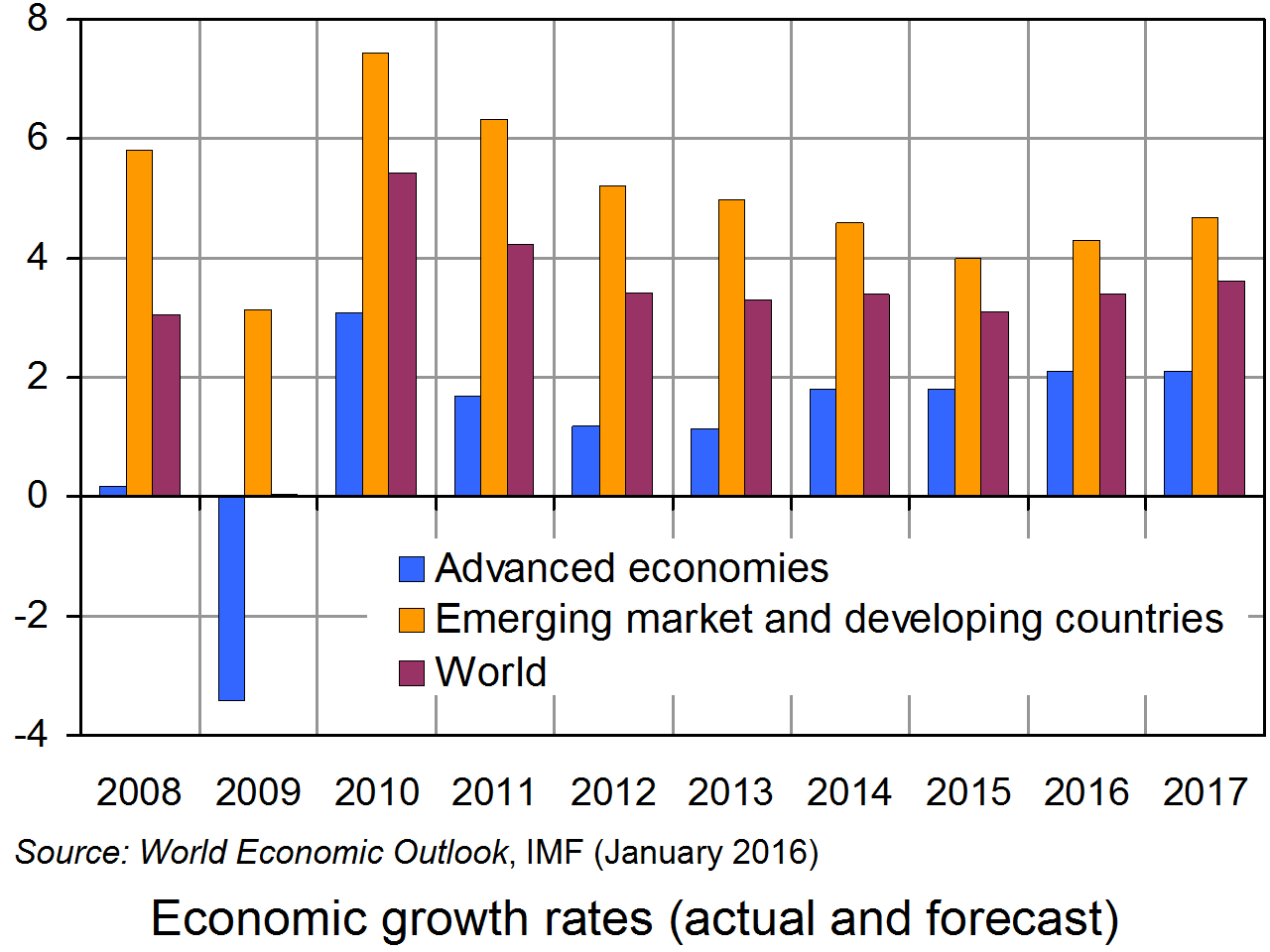 At a meeting of the G7 finance ministers in London from 4–5 June, it was agreed to adopt a minimum corporate tax rate of 15% and to take measures to prevent multinational companies using tax havens to avoid paying taxes. It was also agreed that part of the taxes paid should go to the countries where sales are made and not just to those where the companies are based.
At a meeting of the G7 finance ministers in London from 4–5 June, it was agreed to adopt a minimum corporate tax rate of 15% and to take measures to prevent multinational companies using tax havens to avoid paying taxes. It was also agreed that part of the taxes paid should go to the countries where sales are made and not just to those where the companies are based.
This agreement is the first step on the road to a comprehensive global agreement. The next step is a meeting of the finance ministers and central bank governors of the G20 countries in Venice from 9 to 10 July. The G7 ministers hope that their agreement will be adopted by this larger group, which includes other major economies such as Russia, China, India, Brazil, Australia, South Korea and South Africa.
Later in July, the proposals will be put to a group of 139 countries and jurisdictions at a meeting co-ordinated by the OECD. It is hoped that this meeting will finalise an international agreement with precise details on corporate tax rules. It follows work by the OECD on reforming international taxation under its Framework on Base Erosion and Profit Shifting (BEPS).
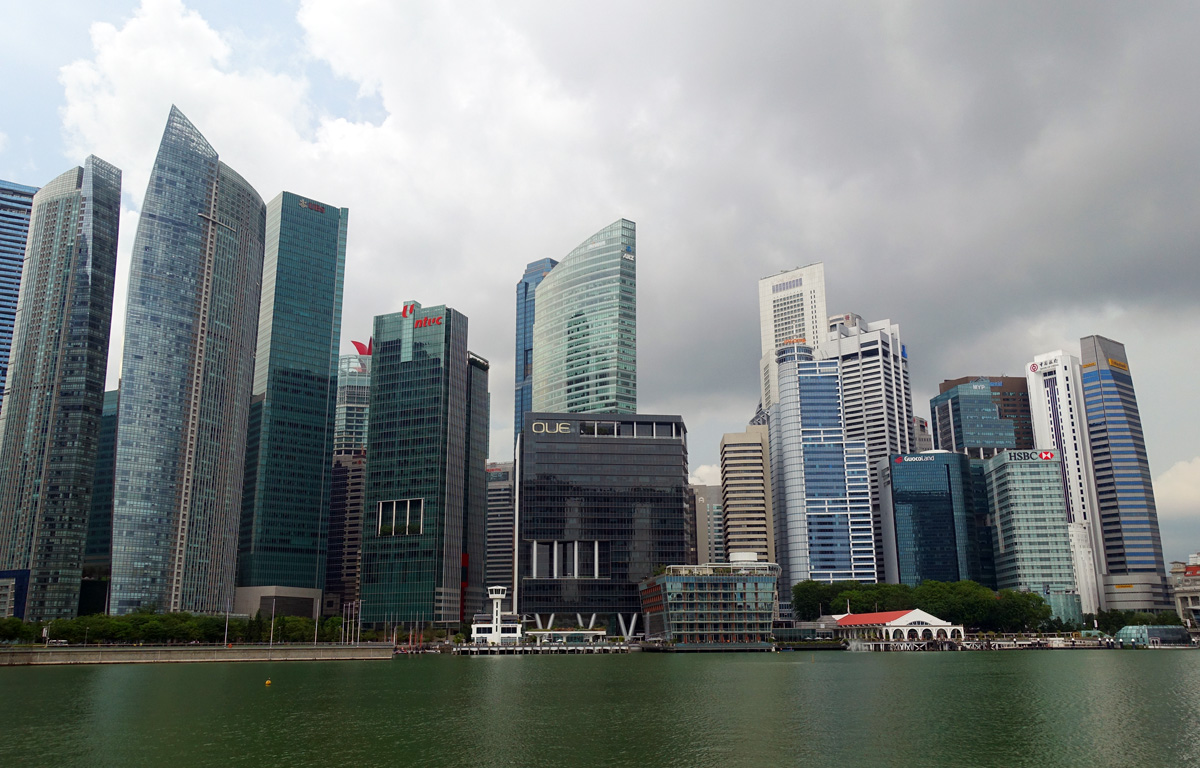 These meetings follow growing concerns about the ability of multinational companies to avoid taxes by basing regional headquarters in low-tax countries, such as Luxembourg or Singapore, and declaring their profits there, despite having only a tiny proportion of their sales in these countries.
These meetings follow growing concerns about the ability of multinational companies to avoid taxes by basing regional headquarters in low-tax countries, such as Luxembourg or Singapore, and declaring their profits there, despite having only a tiny proportion of their sales in these countries.
The desire to attract multinational profits has led to a prisoners’ dilemma situation, whereby countries have been competing against each other to offer lower taxes, even though it reduces global corporate tax revenues.
With many countries having seen a significant rise in government deficits as result of the COVID-19 pandemic and the support measures put in place, there has been a greater urgency to reach international agreement on corporate taxes. The G7 agreement, if implemented, will provide a significant increase in tax revenue.
Details of the G7 agreement
The agreement has two parts or ‘pillars’.
Pillar 1 allows countries to tax large multinationals earning global profits of more than 10% if these companies are not based there but earn revenues there. Countries will be given tax rights over at least 20% of the profits earned there which exceed the 10% margin. The level of profits determined for each country will be based on the proportion of revenues earned there.
Pillar 2 sets a minimum corporate tax rate of 15% for each of the seven countries, which call on other countries to adopt the same minimum. The hope is that the G20 countries will agree to this and then at the OECD meeting in July a global agreement will be reached. If a country chooses to charge a rate below 15%, then a top-up tax can be applied by the home country to bring the total rate up to the 15%.
It is possible that these proposals will be strengthened/amended at the G20 and OECD meetings. For example, the 15% minimum rate may be raised. Indeed, the USA had initially proposed a 25% rate and then 21%, and several EU countries such as France, have been pushing for a substantially higher rate.
Analysis
The agreement was hailed as ‘historic’ by Rishi Sunak, the UK Chancellor of the Exchequer. This is true in that it is the first time there has been an international agreement on minimum corporate tax rates and locating part of tax liability according to sales. What is more, the rules may be strengthened at the G20 and/or OECD meetings.
There have been various criticisms of the agreement, however. The first is that 15% is too low and is well below the rates charged in many countries. As far as the UK is concerned, the IPPR think tank estimates that the deal will raise £7.9bn whereas a 25% rate would raise £14.7bn.
 Another criticism is that the reallocation of some tax liabilities to countries where sales are made rather than where profits are booked applies only to profits in excess of 10%. This would therefore not affect companies, such as Amazon, with a model of large-scale low-margin sales and hence profits of less than 10%.
Another criticism is that the reallocation of some tax liabilities to countries where sales are made rather than where profits are booked applies only to profits in excess of 10%. This would therefore not affect companies, such as Amazon, with a model of large-scale low-margin sales and hence profits of less than 10%.
Also there is the criticism that a 20% reallocation is too low and would thus provide too little tax revenue to poor countries which may record large sales but where little or no profits are booked.
 The UK was one of the more reluctant countries to sign up to a deal that would have a significant impact on tax havens in various British overseas territories and crown dependencies, such as the British Virgin islands, Bermuda, the Cayman Islands, the Channel Islands and Isle of Man. The agreement also calls into question whether the announced UK freeports can go ahead. Although these are largely concerned with waiving tariffs and other taxes on raw materials and parts imported into the freeport, which are then made into finished or semi-finished products within the freeport for export, they are still seen by many as not in the spirit of the G7 agreement.
The UK was one of the more reluctant countries to sign up to a deal that would have a significant impact on tax havens in various British overseas territories and crown dependencies, such as the British Virgin islands, Bermuda, the Cayman Islands, the Channel Islands and Isle of Man. The agreement also calls into question whether the announced UK freeports can go ahead. Although these are largely concerned with waiving tariffs and other taxes on raw materials and parts imported into the freeport, which are then made into finished or semi-finished products within the freeport for export, they are still seen by many as not in the spirit of the G7 agreement.
What is more, the UK has been pushing for financial services to be exempted from Pillar 1 of the deal, which would otherwise see taxes partly diverted from the UK to other countries where such firms do business. For example, HSBC generates more than half its income from China and Standard Chartered operates mostly in Asia and Africa.
Update: July 2021
The G7 plan was agreed by the finance ministers of the G20 countries on July 11 in Venice. By that point, 130 of the 139 countries which are part of the Inclusive Framework of the OECD and which represent more than 90% of global GDP, had signed up to the plan and it was expected that there would be a global agreement reached at the OECD meeting later in the month. The other nine countries were Ireland, Hungary and Estonia in the EU and Kenya, Nigeria, Peru, Sri Lanka, Barbados and Saint Vincent and the Grenadines. Several of these countries use low corporate taxes to encourage inward investment and are seen as tax havens.
Videos
Articles
- G-7 nations reach historic deal on global tax reform
CNBC, Silvia Amaro, Joanna Tan and Emma Newburger (5/6/21)
- Rishi Sunak hails ‘historic’ breakthrough as G7 ministers agree global tech tax deal
The Telegraph, Lucy Burton and Edward Malnick (5/6/21)
- G7 backs Biden’s sweeping overhaul of global tax system
CNN, Tara John and Kevin Liptak (5/6/21)
- ‘Historic’ G7 deal to stop global corporate tax avoidance welcomed by tech giants Google and Facebook
Sky News, Ajay Nair (6/6/21)
- Finance Leaders Reach Global Tax Deal Aimed at Ending Profit Shifting
New York Times, Alan Rappeport (5/6/21)
- G7 strikes historic agreement on taxing multinationals
Financial Times, Chris Giles (5/6/21)
- G7 tax deal is ‘starting point’ on road to global reform
LAPM Journal, Chris Giles and Delphine Strauss (FT) (6/6/21)
- G7 tax deal doesn’t go far enough, campaigners say
BBC News (6/6/21)
- Rishi Sunak announces ‘historic agreement’ by G7 on tax reform
The Observer, Phillip Inman and Michael Savage (5/6/21)
- G7 deal is as much about balance of power as global tax reform
The Guardian, Richard Partington (6/6/21)
- Global G7 deal may let Amazon off hook on tax, say experts
The Guardian, Jasper Jolly (6/6/21)
- Explainer: G7 tax deal – what was agreed and what does it mean for Ireland?
The Irish Times, Cliff Taylor (5/6/21)
- G7 deal: UK is badly conflicted between offshore tax havens and Biden’s global tax drive
The Conversation, Atul K. Shah (4/6/21)
- G7 tax dodging deal ‘sets bar so low companies can just step over it’
Independent, Emily Goddard (6/6/21)
- UK pushes for City of London to be exempt from G7 tax plan
The Guardian, Phillip Inman and Richard Partington (9/6/21)
- The global pandemic, sustainable economic recovery, and international taxation
Independent Commission for the Reform of International Corporate Taxation (May 2020)
- G20 finance ministers back deal to tax companies
BBC News (11/7/21)
Questions
- How are multinationals currently able to avoid paying corporate taxes in many countries, even though their sales may be high there?
- If the deal is accepted at the OECD meeting in July, would it still be in the interests of low-tax countries to charge tax rates below the agreed minimum rate?
- Why was the UK reluctant to accept the 21% rate proposed by the Biden administration?
- Find out about the digital services tax that has been adopted by many countries, including EU countries and the UK, and why it will be abolished once a minimum corporate tax comes into force.
- Argue the case for and against taxing the whole of multinational profits in countries where they earn revenue in proportion to the company’s total global revenue. Would such a system benefit developing countries?
- Should financial services, such as those provided by City of London firms, be exempted from the deal?
 Many developing countries are facing a renewed debt crisis. This is directly related to Covid-19, which is now sweeping across many poor countries in a new wave.
Many developing countries are facing a renewed debt crisis. This is directly related to Covid-19, which is now sweeping across many poor countries in a new wave.
Between 2016 and 2020, debt service as a percentage of GDP rose from an average of 7.1% to 27.1% for South Asian countries, from 8.1% to 14.1% for Sub-Saharan African countries, from 13.1% to 42.3% for North African and Middle Eastern countries, and from 5.6% to 14.7% for East Asian and Pacific countries. These percentages are expected to climb again in 2021 by around 10% of GDP.
Incomes have fallen in developing countries with illness, lockdowns and business failures. This has been compounded by a fall in their exports as the world economy has contracted and by a 19% fall in aid in 2020. The fall in incomes has led to a decline in tax revenues and demands for increased government expenditure on healthcare and social support. Public-sector deficits have thus risen steeply.
And the problem is likely to get worse before it gets better. Vaccination roll-outs in most developing countries are slow, with only a tiny fraction of the population having received just one jab. With the economic damage already caused, growth is likely to be subdued for some time.
This has put developing countries in a ‘trilemma’, as the IMF calls it. Governments must balance the objectives of:
- meeting increased spending needs from the emergency and its aftermath;
- limiting the substantial increase in public debt;
- trying to contain rises in taxes.
Developing countries are faced with a difficult trade-off between these objectives, as addressing one objective is likely to come at the expense of the other two. For example, higher spending would require higher deficits and debt or higher taxes.
The poorest countries have little scope for increased domestic borrowing and have been forced to borrow on international markets. But such debt is costly. Although international interest rates are generally low, many developing countries have had to take on increasing levels of borrowing from private lenders at much higher rates of interest, substantially adding to the servicing costs of their debt.
Debt relief
 International agencies and groups, such as the IMF, the World Bank, the United Nations and the G20, have all advocated increased help to tackle this debt crisis. The IMF has allocated $100bn in lending through the Rapid Financing Instrument (RFI) and the Rapid Credit Facility (RCF) and nearly $500m in debt service relief grants through the Catastrophe Containment and Relief Trust (CCRT). The World Bank is increasing operations to $160bn.
International agencies and groups, such as the IMF, the World Bank, the United Nations and the G20, have all advocated increased help to tackle this debt crisis. The IMF has allocated $100bn in lending through the Rapid Financing Instrument (RFI) and the Rapid Credit Facility (RCF) and nearly $500m in debt service relief grants through the Catastrophe Containment and Relief Trust (CCRT). The World Bank is increasing operations to $160bn.
The IMF is also considering an increase in special drawing rights (SDRs) from the current level of 204.2bn ($293.3bn) to 452.6bn ($650bn) – a rise of 121.6%. This would be the first such expansion since 2009. It has received the support of both the G7 and the G20. SDRs are reserves created by the IMF whose value is a weighted average of five currencies – the US dollar (41.73%), the euro (30.93%), the Chinese yuan (10.92%), the Japanese yen (8.33%) and the pound sterling (8.09%).
Normally an increase in SDRs would be allocated to countries according their IMF quotas, which largely depend on the size of their GDP and their openness. Any new allocation under this formula would therefore go mainly to developed countries, with developing economies getting only around $60bn of the extra $357bn. It has thus been proposed that developed countries give much of their allocation to developing countries. These could then be used to cancel debts. This proposal has been backed by Janet Yellen, the US Secretary of the Treasury, who said she would “strongly encourage G20 members to channel excess SDRs in support of recovery efforts in low-income countries, alongside continued bilateral financing”.
 The G20 countries, with the support of the IMF and World Bank, have committed to suspend debt service payments by eligible countries which request to participate in its Debt Service Suspension Initiative (DSSI). There are 73 eligible countries. The scheme, now extended to 31 December 2021, provides a suspension of debt-service payments owed to official bilateral creditors. In return, borrowers commit to use freed-up resources to increase social, health or economic spending in response to the crisis. As of April 2021, 45 countries had requested to participate, with savings totalling more than $10bn. The G20 has also called on private creditors to join the DSSI, but so far without success.
The G20 countries, with the support of the IMF and World Bank, have committed to suspend debt service payments by eligible countries which request to participate in its Debt Service Suspension Initiative (DSSI). There are 73 eligible countries. The scheme, now extended to 31 December 2021, provides a suspension of debt-service payments owed to official bilateral creditors. In return, borrowers commit to use freed-up resources to increase social, health or economic spending in response to the crisis. As of April 2021, 45 countries had requested to participate, with savings totalling more than $10bn. The G20 has also called on private creditors to join the DSSI, but so far without success.
Despite these initiatives, the scale of debt relief (as opposed to extra or deferred lending) remains small in comparison to earlier initiatives. Under the Heavily Indebted Poor Countries initiative (HIPC, launched 1996) and the Multilateral Debt Relief Initiative (MDRI, launched 2005) more than $100bn of debt was cancelled.
Since the start of the pandemic, major developed countries have spent between $10 000 and $20 000 per head in stimulus and social support programmes. Sub-Saharan African countries on average are seeking only $365 per head in support.
Articles and blogs
Podcast
Report
Data
Questions
- Imagine you are an economic advisor to a developing country attempting to rebuild the economy after the coronavirus pandemic. How would you advise it to proceed, given the ‘trilemma’ described above?
- How does the News24 article define ‘smart debt relief’. Do you agree with the definition and the means of achieving smart debt relief?
- To what extent is it in the interests of the developed world to provide additional debt relief to poor countries whose economies have been badly affected by the coronavirus pandemic?
- Research ‘debt-for-nature swaps’. To what extent can debt relief for countries affected by the coronavirus pandemic be linked to tackling climate change?
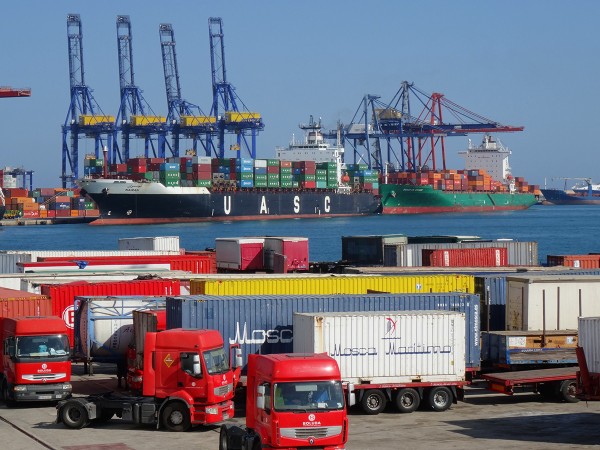 There is a lot of pessimism around about the state of the global economy and the prospects for more sustained growth. Stock markets have been turbulent; oil and other commodity prices have fallen; inflation has been below central bank targets in most countries; and growth has declined in many countries, most worryingly in China.
There is a lot of pessimism around about the state of the global economy and the prospects for more sustained growth. Stock markets have been turbulent; oil and other commodity prices have fallen; inflation has been below central bank targets in most countries; and growth has declined in many countries, most worryingly in China.
The latest worry, expressed by finance ministers at the G20 conference in Shanghai, is that UK exit from the EU could have a negative impact on economic growth, not just for the UK, but for the global economy generally.
But is this pessimism justified? In an interesting article in the Independent, Hamish McRae argues that there are five signs that the world economy is not doomed yet! These are:
|
|
| • |
There are more monetary and fiscal measures that can still be taken to boost aggregate demand. |
| • |
Despite some slowing of economic growth, there is no sign of a global recession in the offing. |
|
|
| • |
US and UK growth are relatively buoyant, with consumer demand ‘driving the economy forward’. |
| • |
Deflation worries are too great, especially when lower prices are caused by lower commodity prices. These lower costs should act to stimulate demand as consumers have more real purchasing power. |
| • |
Inflation may start to edge upwards over the coming months and this will help to increase confidence as it will be taken as a sign that demand is recovering. |
So, according to McRae, there are five things we should look for to check on whether the global economy is recovering. He itemises these at the end of the article. But are these the only things we should look for?
Five signs that the world economy is not doomed yet Independent, Hamish McRae (27/2/15)
Questions
- What reasons are there to think that the world will grow more strongly in 2016 than in 2015?
- What reasons are there to think that the world will grow less strongly in 2016 than in 2015?
- Distinguish between leading and lagging indicators of economic growth.
- Do you agree with McRae’s choice of five indicators of whether the world economy is likely to grow more strongly?
- What indicators would you add to his list?
- Give some examples of ‘economic shocks’ that could upset predictions of economic growth rates. Explain their effect.
 Here are two thought-provoking articles from The Guardian. They look at macroeconomic policy failures and at the likely consequences.
Here are two thought-provoking articles from The Guardian. They look at macroeconomic policy failures and at the likely consequences.
In first article, Larry Elliott, the Guardian’s Economics Editor, argues that Keynesian expansionary fiscal and monetary policy by the USA has allowed it to achieve much more rapid recovery than Europe, which, by contrast, has chosen to follow fiscal austerity policies and only recently mildly expansionary monetary policy through a belated QE programme.
In the UK, the recovery has been more significant than in the eurozone because of the expansionary monetary policies pursued by the Bank of England in its quantitative easing programme. ‘And when it came to fiscal policy, George Osborne quietly abandoned his original deficit reduction targets when the deleterious impact of an over-aggressive austerity strategy became apparent.’
So, according to Larry Elliott, Europe should ease up on austerity and governments should invest more though increased borrowing.
‘This is textbook Keynesian stuff. Unemployment is high, which means businesses are reluctant to invest. The lack of investment means that demand for new loans is weak. The weakness of demand for loans means that driving down the cost of borrowing through QE will have little impact. Therefore, it is up to the state to break into the vicious circle by investing itself, something it can do cheaply and – because there are so many people unemployed and businesses working well below full capacity – without the risk of inflation.’
In the second article, Paul Mason, the Economics Editor at Channel 4 News, points to the large increases in both public- and private- sector 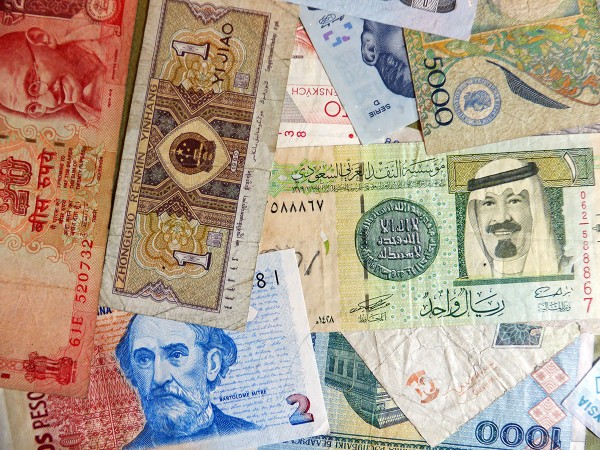 debt since 2007, despite the recession. Such debt, he argues, is becoming unsustainable and hence the world could be on the cusp of another crash.
debt since 2007, despite the recession. Such debt, he argues, is becoming unsustainable and hence the world could be on the cusp of another crash.
Mason quotes from the Bank for International Settlements Quarterly Review September 2015 – media briefing. In this briefing, Claudio Borio,
Head of the Monetary & Economic Department, argues that:
‘Since at least 2009, domestic vulnerabilities have developed in several emerging market economies (EMEs), including some of the largest, and to a lesser extent even in some advanced economies, notably commodity exporters. In particular, these countries have exhibited signs of a build-up of financial imbalances, in the form of outsize credit booms alongside strong increases in asset prices, especially property prices, supported by unusually easy global liquidity conditions. It is the coincidence of the reversal of these booms with external vulnerabilities that should be watched most closely.’
 We have already seen a fall in commodity prices, reflecting the underlying lack of demand, and large fluctuations in stock markets. The Chinese economy is slowing markedly, as are several other EMEs, and Europe and Japan are struggling to recover, despite their QE programmes. The USA is no longer engaging in QE and there are growing worries about a US slowdown as growth in the rest of the world slows. Mason, quoting the BIS briefing, states that:
We have already seen a fall in commodity prices, reflecting the underlying lack of demand, and large fluctuations in stock markets. The Chinese economy is slowing markedly, as are several other EMEs, and Europe and Japan are struggling to recover, despite their QE programmes. The USA is no longer engaging in QE and there are growing worries about a US slowdown as growth in the rest of the world slows. Mason, quoting the BIS briefing, states that:
‘In short, as the BIS economists put it, this is “a world in which debt levels are too high, productivity growth too weak and financial risks too threatening”. It’s impossible to extrapolate from all this the date the crash will happen, or the form it will take. All we know is there is a mismatch between rising credit, falling growth, trade and prices, and a febrile financial market, which, at present, keeps switchback riding as money flows from one sector, or geographic region, to another.’
So should there be more expansionary policy, or should rising debt levels be reduced by tighter monetary policy? Read the articles and then consider the questions.
I told you so. Obama right and Europe wrong about way out of Great Recession The Guardian, Larry Elliott (1/11/15)
Apocalypse now: has the next giant financial crash already begun? The Guardian, Paul Mason (1/11/15)
Questions
- To what extent do the two articles (a) agree and (b) disagree?
- How might a neo-liberal economist reply to the argument that what is needed is more expansionary fiscal and monetary policies?
- What is the transmission mechanism whereby quantitative easing affects real output? Is it a reliable mechanism for policymakers?
- What would make a financial crash less likely? Is this something that governments or central banks can influence?
- Why has productivity growth been so low in many countries? What would increase it?
 This weekend, Australia will play host to the world’s leaders, as the G20 Summit takes place. The focus of the G20 Summit will be on global growth and how it can be promoted. The Eurozone remains on the brink, but Germany did avoid for recession with positive (just) growth in the third quarter of this year. However, despite Australia’s insistence on returning the remit of the G20 to its original aims, in particular promoting growth, it is expected that many other items will also take up the G20’s agenda.
This weekend, Australia will play host to the world’s leaders, as the G20 Summit takes place. The focus of the G20 Summit will be on global growth and how it can be promoted. The Eurozone remains on the brink, but Germany did avoid for recession with positive (just) growth in the third quarter of this year. However, despite Australia’s insistence on returning the remit of the G20 to its original aims, in particular promoting growth, it is expected that many other items will also take up the G20’s agenda.
In February, the G20 Finance Ministers agreed various measures to boost global growth and it is expected that many of the policies discussed this weekend will build on these proposals. The agreement contained a list of new policies that had the aim of boosting economy growth of the economies by an extra 2% over a five year period. If this were to happen, the impact would be around £1.27 trillion. The agreed policies will be set out in more detail as part of the Brisbane Action Plan.
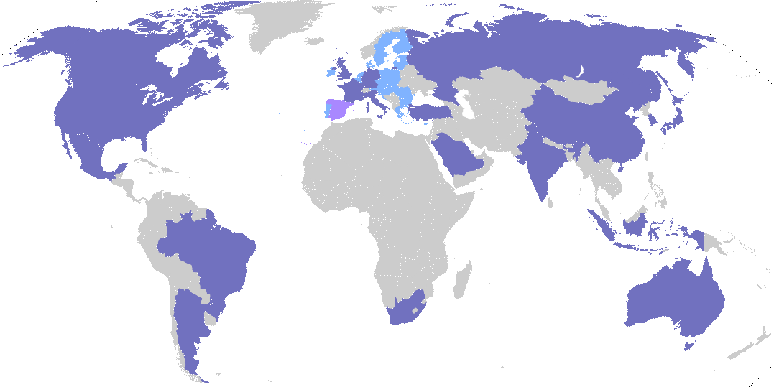 As well as a discussion of measures to promote global growth as a means of boosting jobs across the world, there will also be a focus on using these measures to prevent deflation from becoming a problem across Europe. Global tax avoidance by some of the major multinationals will also be discussed and leaders will be asked to agree on various measures. These include a common reporting standard; forcing multinationals to report their accounts country by country and principles about disclosing the beneficial ownership of companies. It it also expected that the tensions between Russia and Ukraine will draw attention from the world leaders. But, the main focus will be the economy. Australia’s Prime Minister, Tony Abbott said:
As well as a discussion of measures to promote global growth as a means of boosting jobs across the world, there will also be a focus on using these measures to prevent deflation from becoming a problem across Europe. Global tax avoidance by some of the major multinationals will also be discussed and leaders will be asked to agree on various measures. These include a common reporting standard; forcing multinationals to report their accounts country by country and principles about disclosing the beneficial ownership of companies. It it also expected that the tensions between Russia and Ukraine will draw attention from the world leaders. But, the main focus will be the economy. Australia’s Prime Minister, Tony Abbott said:
“Six years ago, the impacts of the global financial crisis reverberated throughout the world. While those crisis years are behind us, we still struggle with its legacy of debt and joblessness…The challenge for G20 leaders is clear – to lift growth, boost jobs and strengthen financial resilience. We need to encourage demand to ward off the deflation that threatens the major economies of Europe.”
 Many people have protested about the lack of action on climate change, but perhaps this has been addressed to some extent by the deal between China and the USA on climate change and Barak Obama’s pledge to make a substantial contribution to the Green Climate Fund. This has caused some problems and perhaps embarrassment for the host nation, as Australia has remained adamant that despite the importance of climate change, this will not be on the agenda of the G20 Summit. Suggestions now, however, put climate change as the final communique.
Many people have protested about the lack of action on climate change, but perhaps this has been addressed to some extent by the deal between China and the USA on climate change and Barak Obama’s pledge to make a substantial contribution to the Green Climate Fund. This has caused some problems and perhaps embarrassment for the host nation, as Australia has remained adamant that despite the importance of climate change, this will not be on the agenda of the G20 Summit. Suggestions now, however, put climate change as the final communique.
Some people and organisations have criticised the G20 and questioned its relevance, so as well as discussing a variety of key issues, the agenda will more broadly be aiming to address this criticism. And of course, focus will also be on tensions between some of the key G20 leaders. The following articles consider the G20 Summit.
Articles
Ukraine and Russia take center stage as leaders gather for G20 Reuters, Matt Siegel (14/11/14)
The G20 Summit: World leaders gather in Brisbane BBC News (14/11/11)
G20: Obama to pledge $2.5bn to help poor countries on climate change The Guardian, Suzanne Goldenberg (14/11/14)
G20 in 20: All you need to know about Brisbane Leaders summit in 20 facts Independent, Mark Leftly (13/11/14)
G20 leaders to meet in Australia under pressure to prove group’s relevance The Guardian, Lenore Taylor (13/11/14)
Australia PM Abbott accuses Putin of bullying on eve of G20 Financial Times, George Parker and Jamie Smyth (14/11/14)
G20: David Cameron in Australia for world leaders’ summit BBC News (13/11/14)
G20 summit: Australian PM Tony Abbott tries to block climate talks – and risks his country becoming an international laughing stock Independent, Kathy Marks (13/11/14)
Incoming G20 leader Turkey says groups must be more inclusive Reuters, Jane Wardell (14/11/14)
Behind the motorcades and handshakes, what exactly is the G20 all about – and will it achieve ANYTHING? Mail Online, Sarah Michael (14/11/14)
Is the global economy headed for the rocks? BBC News, Robert Peston (17/11/14)
Official G20 site
G20 Priorities G20
Australia 2014 G20
News G20
Questions
- What is the purpose of the G20 and which countries are members of it? Should any others be included in this type of organisation?
- What are the key items on the agenda for the G20 Summit in Brisbane?
- One of the main objectives of this Summit is to discuss the policies that will be implemented to promote growth. What types of policies are likely to be important in promoting global economic growth?
- What types of policies are effective at addressing the problem of deflation?
- What impact will the tensions between Russia and Ukraine have on the progress of the G20?
- Why are multinationals able to engage in tax evasion? What policies could be implemented to prevent this and to what extent is global co-operation needed?
- Discuss possible reforms to the IMF and the G20’s role in promoting such reforms.
- Should the G20 be scrapped?
 At a meeting of the G7 finance ministers in London from 4–5 June, it was agreed to adopt a minimum corporate tax rate of 15% and to take measures to prevent multinational companies using tax havens to avoid paying taxes. It was also agreed that part of the taxes paid should go to the countries where sales are made and not just to those where the companies are based.
At a meeting of the G7 finance ministers in London from 4–5 June, it was agreed to adopt a minimum corporate tax rate of 15% and to take measures to prevent multinational companies using tax havens to avoid paying taxes. It was also agreed that part of the taxes paid should go to the countries where sales are made and not just to those where the companies are based. These meetings follow growing concerns about the ability of multinational companies to avoid taxes by basing regional headquarters in low-tax countries, such as Luxembourg or Singapore, and declaring their profits there, despite having only a tiny proportion of their sales in these countries.
These meetings follow growing concerns about the ability of multinational companies to avoid taxes by basing regional headquarters in low-tax countries, such as Luxembourg or Singapore, and declaring their profits there, despite having only a tiny proportion of their sales in these countries.  Another criticism is that the reallocation of some tax liabilities to countries where sales are made rather than where profits are booked applies only to profits in excess of 10%. This would therefore not affect companies, such as Amazon, with a model of large-scale low-margin sales and hence profits of less than 10%.
Another criticism is that the reallocation of some tax liabilities to countries where sales are made rather than where profits are booked applies only to profits in excess of 10%. This would therefore not affect companies, such as Amazon, with a model of large-scale low-margin sales and hence profits of less than 10%.  The UK was one of the more reluctant countries to sign up to a deal that would have a significant impact on tax havens in various British overseas territories and crown dependencies, such as the British Virgin islands, Bermuda, the Cayman Islands, the Channel Islands and Isle of Man. The agreement also calls into question whether the announced UK freeports can go ahead. Although these are largely concerned with waiving tariffs and other taxes on raw materials and parts imported into the freeport, which are then made into finished or semi-finished products within the freeport for export, they are still seen by many as not in the spirit of the G7 agreement.
The UK was one of the more reluctant countries to sign up to a deal that would have a significant impact on tax havens in various British overseas territories and crown dependencies, such as the British Virgin islands, Bermuda, the Cayman Islands, the Channel Islands and Isle of Man. The agreement also calls into question whether the announced UK freeports can go ahead. Although these are largely concerned with waiving tariffs and other taxes on raw materials and parts imported into the freeport, which are then made into finished or semi-finished products within the freeport for export, they are still seen by many as not in the spirit of the G7 agreement. Multinational giants Amazon, Facebook and Google to face G7 tax bill
Multinational giants Amazon, Facebook and Google to face G7 tax bill G7 agrees ‘historic’ global minimum corporate tax rate
G7 agrees ‘historic’ global minimum corporate tax rate Global Tax Deal: Historic agreement signed by G7 leaders
Global Tax Deal: Historic agreement signed by G7 leaders Understanding tax avoidance
Understanding tax avoidance Many developing countries are facing a renewed debt crisis. This is directly related to Covid-19, which is now sweeping across many poor countries in a new wave.
Many developing countries are facing a renewed debt crisis. This is directly related to Covid-19, which is now sweeping across many poor countries in a new wave.  International agencies and groups, such as the IMF, the World Bank, the United Nations and the G20, have all advocated increased help to tackle this debt crisis. The IMF has allocated $100bn in lending through the Rapid Financing Instrument (
International agencies and groups, such as the IMF, the World Bank, the United Nations and the G20, have all advocated increased help to tackle this debt crisis. The IMF has allocated $100bn in lending through the Rapid Financing Instrument ( The G20 countries, with the support of the IMF and World Bank, have committed to suspend debt service payments by eligible countries which request to participate in its Debt Service Suspension Initiative (
The G20 countries, with the support of the IMF and World Bank, have committed to suspend debt service payments by eligible countries which request to participate in its Debt Service Suspension Initiative (
